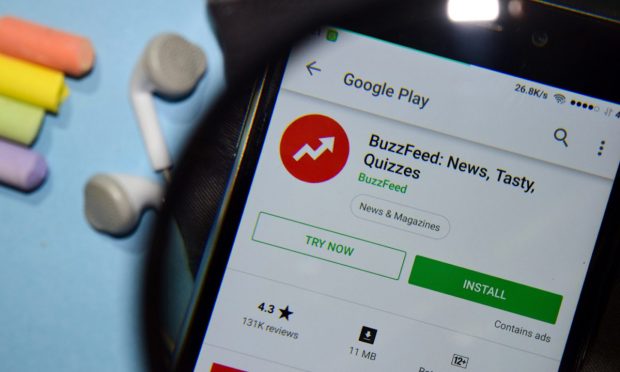Walmart Grows Its Shoppable Content Empire With Buzzfeed Partnership Expansion

Among online grocers, Walmart is winning the contextual commerce race, announcing move after move to turn the online shopping experience from work to leisure. On Tuesday (Sept. 28), Buzzfeed announced that it is growing its Tasty brand’s partnership with the retailer, which first launched in 2019, with new add-to-bag capabilities and ad sales opportunities.
Working with advertising platform AdAdapted and recipe shopping technology provider Northfork, Buzzfeed is providing consumer packaged goods (CPG) brands with the opportunity to promote products through Tasty content. Through this integration, consumers will be able to add items featured in articles and videos on the Tasty app to their shopping carts in one click. When they are ready to check out, they will be taken to Walmart’s website or app to complete the purchase for pickup or delivery.
The Context
Walmart, the world’s largest grocer, has been aggressive in its moves toward contextual commerce, and the retailer’s continuing expansion of its suite of shoppable content suggests that its early efforts have been successful. In addition to integrating with other brands’ content, Walmart also generates its own shoppable content, including star-studded video series, such as its Cookshop culinary videos for adults or its Make It with Walmart activities for children.
Earlier this month, the company partnered with media giant Meredith for shoppable integrations across Meredith’s brand portfolio. On Wednesday (Sept. 29), Walmart is holding a livestream pet food shopping event with TV personality Rachael Ray.
Read more: Walmart Partners With Meredith for AI-Informed Contextual Grocery Commerce
And also: Walmart Collaborates With Rachael Ray on Livestream Shopping Event
By the Numbers
Contextual integrations such as these can help attract consumers to the under-penetrated online grocery category by making the shopping experience more frictionless. Research from PYMNTS’ August study, “What Consumers Expect From Their Grocery Shopping Experiences,” produced in collaboration with ACI Worldwide, finds that only 8% of consumers say that their most preferred channel for grocery purchasing is buying online for delivery, while 23% of grocery shoppers overall order groceries online for delivery.
Of those shopping online for grocery, the study found that speed and ease of use are top of mind — 76% of the over 2,300 U.S. consumers surveyed reported that they use these channels because they are more convenient, and 57% said they do so because the path to purchase is quicker.
See also: Digital Features Can Help Grocers Win Over 43% of Shoppers
What the Experts Are Saying
Contextual commerce moves such as these can help grocers create sales opportunities without the risk of coming up against consumers’ basket fatigue.
“Customers tend to spend over 20 minutes creating a basket, some cases can take up to an hour, and a lot of customers get frustrated and just stop,” Ali Ahmed, CEO and co-founder of mobile store company Robomart, told PYMNTS in a recent interview. “That’s where you see the most drop off — when customers are trying to put together a grocery basket.”
Recipes especially lend themselves to these sorts of integrations. “Recipe content has always been incredibly shoppable,” Jason Young, president of digital shopper marketing platform Chicory, told PYMNTS in an interview. “What’s happening is, we now have the pipes all connected, so that you can go very directly from content like recipes into transactional moments. But if you look at recipes historically, they’ve always been a point of inspiration, a point of kicking off the food shopping process.”
Related news: Robomart Combats Basket Fatigue by Bringing the Convenience Store to Consumers’ Doors
And also: Soon All Content Will Be Shoppable, Says Contextual Commerce Platform Chicory
